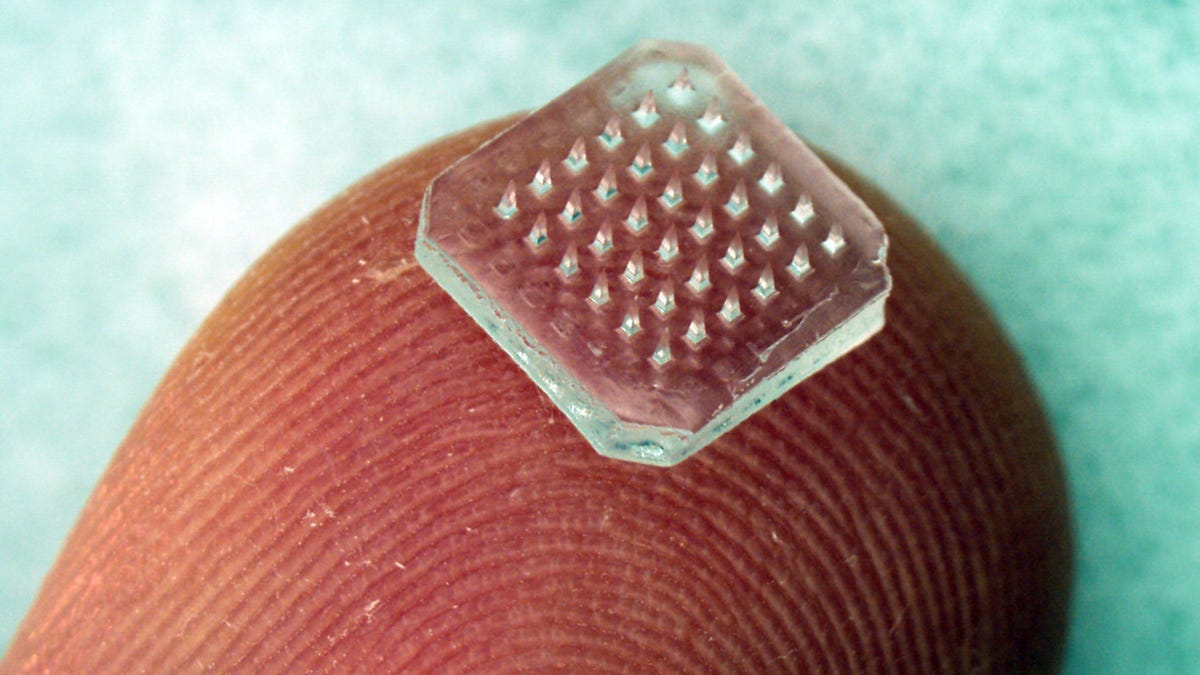Vaccine delivery system dissolves into thin air
A patch comprising hundreds of microscopic needles could allow laypeople to self-administer vaccines and then simply watch the patch dissolve, according to researchers at Georgia Tech.

A patch comprising hundreds of microscopic needles that dissolve into the skin could enable laypeople to administer vaccines not only easily but also painlessly, according to new research out of Georgia Tech and Emory University.
The patch contains roughly an array made of poly-vinyl pyrrolidone with 100 needles that are just 650 microns long. Once pressed into the skin, the microneedles immediately begin to dissolve in bodily fluids, and only the water-soluble backing remains. (Because the backing alone contains nothing sharp, it can simply be thrown away.)
The patches were studied on mice, and the results appeared online in the journal Nature Medicine. Researchers hope to get to human clinical trials later this year.
Three groups of mice formed the study: one receiving the influenza vaccine using hypodermic needle injections into muscle, the second through dissolving microneedles applied to the skin, and the third as a control group with microneedle patches containing no vaccine.
Thirty days later, all mice were infected with the influenza virus. The two groups that had received the vaccine remained healthy, while the control group contracted influenza and died.
Furthermore, when the researchers exposed a different group of immunized mice to the virus three months post-vaccination, they found the mice who'd been vaccinated with microneedles had a better "recall" response to the virus and cleared it from their lungs more effectively than those vaccinated with hypodermic needles.
"In this study, we have shown that a dissolving microneedle patch can vaccinate against influenza at least as well, and probably better than, a traditional hypodermic needle," says Mark Prausnitz, a professor in the Georgia Tech School of Chemical and Biomolecular Engineering.
The reason may have as much to do with location as the size of the needle(s). Skin, it seems, may trigger the immune system better than muscle, according to Richard Compans, professor of microbiology and immunology at Emory University School of Medicine: "The skin is a particularly attractive site for immunization because it contains an abundance of the types of cells that are important in generating immune responses to vaccines."
Most of us probably agree that the world would be a better place without the hypodermic needle. And while this study only investigated the microneedle patch application for influenza, and the patch cannot replace the hypodermic needle for many other applications, it should be able to be used for other immunizations.
If mass-produced, these dissolving patches are expected to cost about as much as conventional needle-and-syringe techniques, but could lower personnel costs and waste disposal requirements, Prausnitz adds:
The dissolving microneedle patch could open up many new doors for immunization programs by eliminating the need for trained personnel to carry out the vaccination. This approach could make a significant impact because it could enable self-administration as well as simplify vaccination programs in schools and assisted living facilities.
We should expect to hear more about this needle patch in the months to come.

